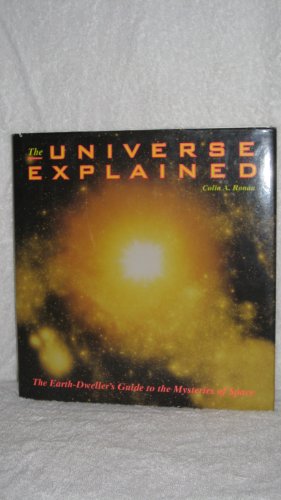A fully illustrated reference guide to exactly how the universe works explores the cosmos while clearly explaining the mechanics involved in its existence, bringing the most difficult of astronomical theories down to an understandable level. 30,000 first printing. $25,000 ad/promo.
YA?Covering everything from rotation to relativity, comets to Pluto, and big bang theory to time travel, this outstanding overview explains the whys of the universe, making astronomy understandable. The book is divided into five broad, logically ordered sections: Observatory Earth, Planets, Sun and Stars, Nebulae and Galaxies, and How the Universe Works. Each color-coded unit title corresponds with matching arrows on each page to facilitate subject identification and accessibility. In addition, the far right margin contains color-coded references to related topics found elsewhere. Clear and informative graphics surround concise, readable descriptions. The exceptional artwork is characterized by dazzling colors and well-planned graphic design. The pictures, paintings, cutaways, perspectives, and computer graphics make even difficult astronomical concepts comprehensible. Similar in format and vocabulary to the author's Science Explained (Holt, 1993), this title is sure to be a hit with earth science students.?David B. O'Hara, W.T. Woodson High School, Fairfax, VA
Copyright 1995 Reed Business Information, Inc.
Drawing on telescopes, satellites, computer imagery, and intriguing current theories, this book examines the interlinked relationships of the cosmos. Ronan, a noted astronomy writer, has written a book that explains the marvel and mystery of the universe for all ages.
Five major sections concentrate on the universe from our observatory Earth, the planets, the sun and stars, nebulae and galaxies, and how it all works. An introductory page to each section is followed by double-page spreads on specific topics. Such topics as "Clouds That Never Rain," "Mapping the Sky," and "Wormholes in Space" intrigue and lead the reader to a fresh view of the macrocosm we inhabit. Each topic is highlighted by readable, stimulating text, spectacular art and photography, colorful diagrams, informative captions, and a sidebar that leads the reader to connections with related ideas. Feature boxes that relate to science or scientists add historical or technological interest. The extensive use of analogies allows the reader to make associations with familiar items or experiences such as likening geysers on a moon of Neptune to a coffee percolator or the colors of the stars to the heated metal in a foundry.
A welcome addition to any collection for budding scientist or curious information seeker, The Universe Explained is recommended for all school or public libraries. Reading any topic in this book is like taking an excursion to an astronomy exhibition or space museum.
